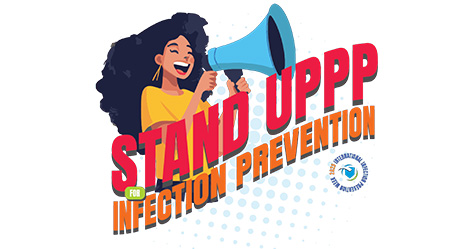Reducing the Number of Hand Hygiene Observations Won’t Affect the Spread of Infections
Study found standards bodies should lower observation requirements to allow more time for education and infection prevention activities
Hand hygiene (HH) monitoring in hospitals could be reduced significantly, allowing infection preventionists to redirect efforts toward quality improvement and patient safety initiatives, according to a new study by the Association for Professionals in Infection Control and Epidemiology (APIC) published in the American Journal of Infection Control. The study’s findings suggest that hospitals could reduce the number of HH observations from 200 to as few as 50 observations per unit per month without compromising data quality.
Hand hygiene is the simplest and most effective method to prevent the spread of infections in healthcare settings. However, adherence among healthcare workers is often low. Given its vital role in infection prevention, implementing a reliable HH monitoring program is essential.
For decades, determining the optimal number of HH observations needed to assess adherence has been a challenge for researchers. In 2019, the Leapfrog Group added a new HH standard to the Leapfrog Hospital Survey which required facilities to collect 200 direct HH observations per month per patient care unit. In 2021, Leapfrog updated the standard to offer 100 observations per unit per month if hospitals met all the other domains in the standard. Survey and accrediting bodies use HH data to assign quality safety grades. The 200-observation standard was based on a 2009 World Health Organization HH observation method.
The Leapfrog Group HH standard is challenging for healthcare facilities because of the significant resources needed to gather such a large number of observations and the shift in focus from collecting quality data and educating healthcare teams to achieving a numerical target.
The purpose of this study was to determine a statistically comparable number of HH observations below the current standard of 100 to 200 observations per unit per month. Researchers with APIC’s Center for Research, Practice, and Innovation analyzed 390,371 HH observations collected in 2023 across 29 facilities within large U.S. hospital systems. They evaluated sample sizes of 25, 50, 100, and 150 observations against the current standard of 200 observations to determine if a statistical difference in adherence within a 95% confidence interval (p = 0.05) existed. A power analysis revealed that a sample size of 50 observations was comparable to 200 observations for assessing HH compliance.
“Strong consideration should be given to reducing the required number of hand hygiene observations,” said Sara Reese, PhD, MPH, CIC, FAPIC, lead investigator and APIC’s Center for Research, Practice & Innovation director of research. “If the participating hospitals were allowed to place less effort on meeting a specific hand hygiene observation number and more effort on feedback, training/education, infrastructure, and culture, they could potentially create a culture that fosters and encourages the importance of HH without the burden of the high number required for the monitoring domain.”
For a hospital with 12 departmental units, collecting 100 to 200 direct HH observations requires 67 to 127 hours per month, translating to an annual cost of approximately US$36,288 to $68,688. By reducing the required number of observations to 50 per unit per month, hospitals could save over $50,000 annually which could be put toward efforts to enhance HH practices and reduce healthcare-associated infections.


